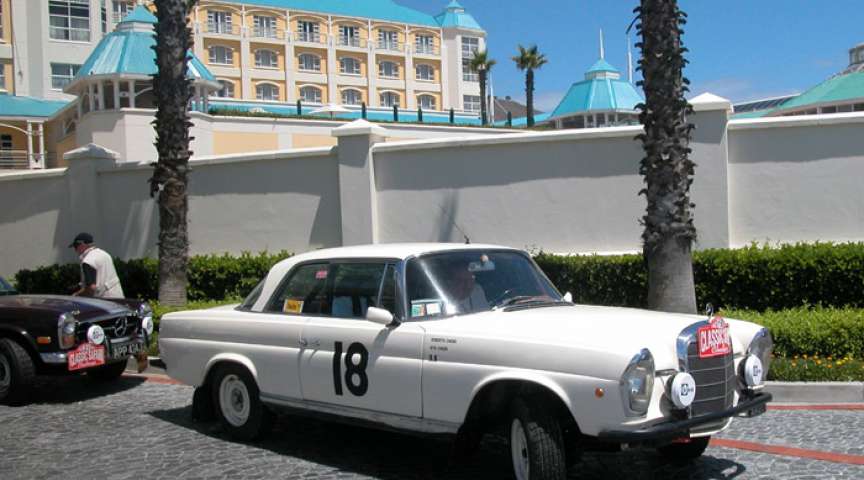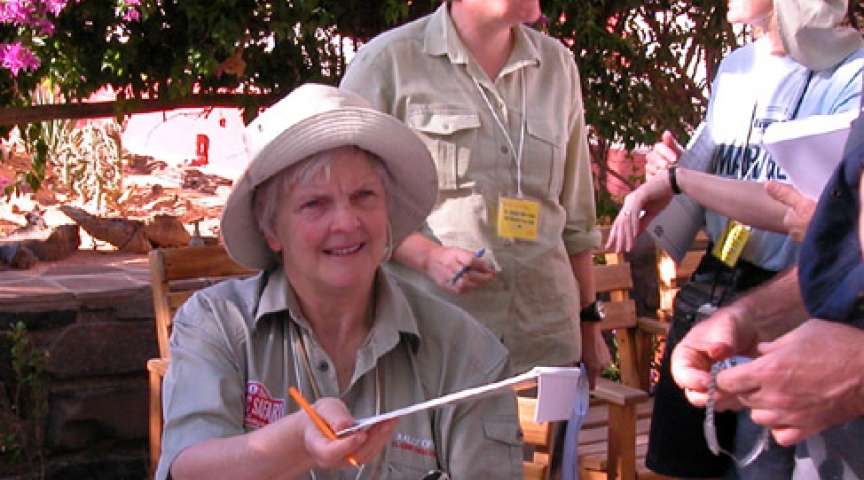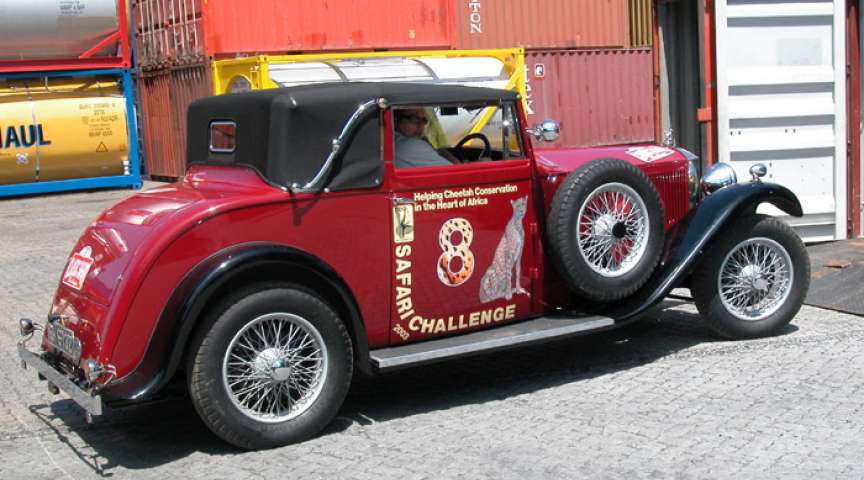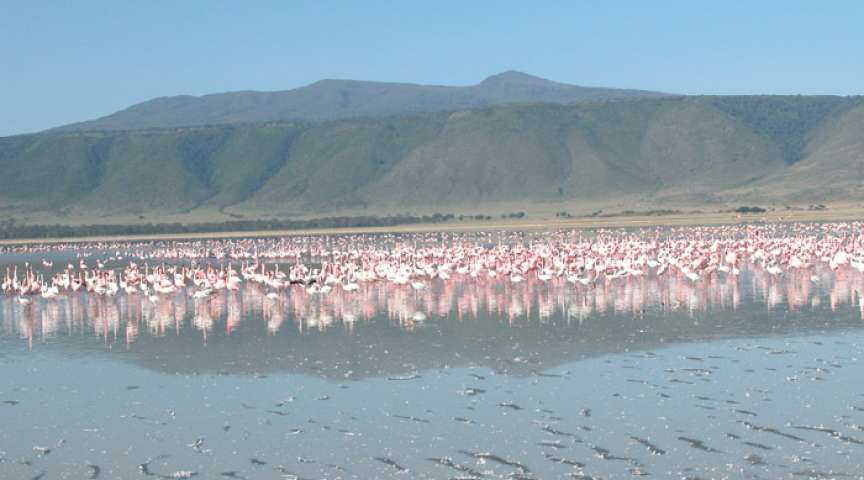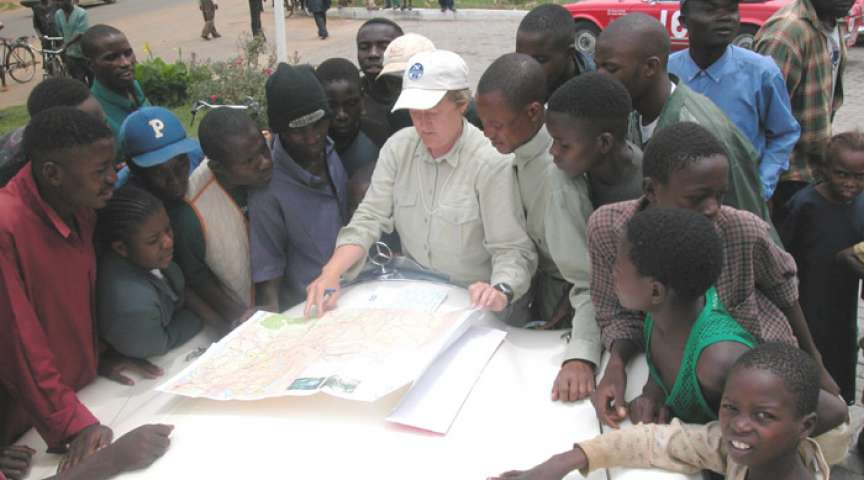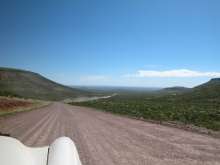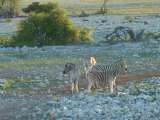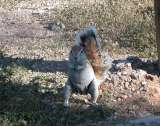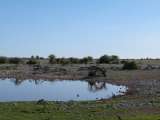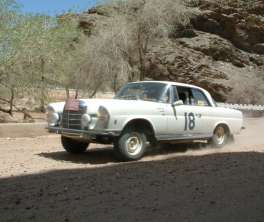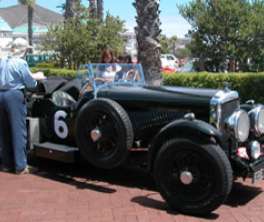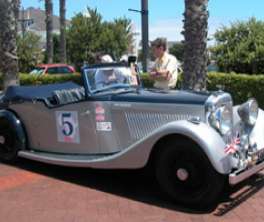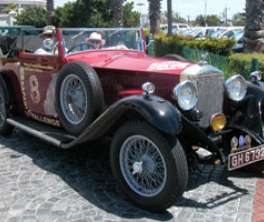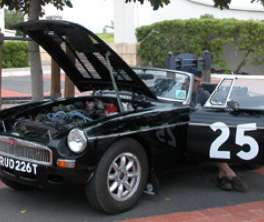Siamo a Etosha Park, la più alta concentrazione di animali che esiste sulla terra. “Se aprissero tutti gli zoo del mondo e li concentrassero in un solo posto”, ha detto un naturalista, “sarebbero sempre meno di quanti se ne possono vedere qui a Etosha”. Per intanto, ci siamo accontentati di un paio di zebre che erano venute a dissetarsi nella pozza vicino al lodge e di un grazioso scoiattolo. La tappa ci ha portato verso un passo a circa 1.500 metri e poi lungo un altipiano verdissimo, pascoli sterminati sotto un cielo che sembra infinito. La “speciale” era di 75 chilometri, media-base i soliti 80 all’ora. Ma si trattava di una strada bianca velocissima, appena una dozzina di curve e qualche avvallamento. Abbiamo timbrato al controllo in 43’, il che significa 96 chilometri all’ora su sterrato. Facile immaginare quale nuvola di polvere si lasciano dietro le nostre macchine e quanto arduo sia tentare un sorpasso. Gli amici americani che ieri hanno avuto l’incidente sono stati trasportati a Windhock, la capitale della Namibia, in elicottero. Newman si è fratturato una spalla, il suo copilota una contusione in testa e un pollice fratturato. Per loro, il Classic Safari è purtroppo finito.
96 KILOMETRES PER HOUR, TRAVELLING EASY
We are in Ethosa Park today, an area densely populated by animals, or rather the one with the highest density in the world. “If you opened the gates of all the zoos in the world, let the animals out and gathered them in one place – said a naturalist – they would still be less in number than you can see here in Ethosa”. We saw two zebras approaching the pond next to the lodge in search of water and a nice little squirrel, and that was a good start for today. As for the lap, it took us to a pass 1500 metres above sea level and then to a large green plateau; boundless pastures stretched out under a sky that seemed to have no end. The special lap was 75 kilometres long, which we ran at an average low speed of 80 per hour. In fact, it was a very fast white way with hardly a dozen bends and very little subsidence. We checked in in 43 minutes’ time, that is to say 96 kilometres per hour as average speed on a dusty track. You can easily imagine what a thick cloud of dust each car produced and how difficult any attempt at overtaking was. Our friends from America (the ones who had a car accident yesterday) were taken by helicopter to Windhock, Namibia’s capital city. Newman has a broken shoulder, his co-driver a bruise on his head and a broken thumb. Classic Safari for them is unfortunately over.

